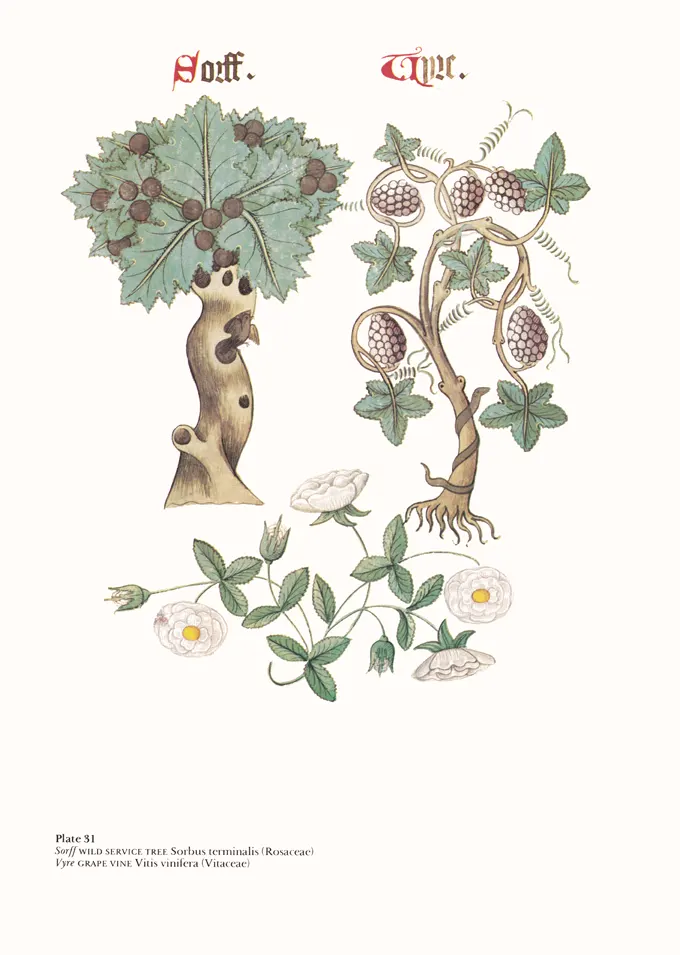Wild Service Tree & Grape Vine
£10.00
Flowers and Trees of Tudor England
In stock
- Satisfaction Guaranteed
- No Hassle Refunds (see Shipping and returns)
- Secure Payments
Description
Sorff: Sorbus torminalis called wild service tree, chequers, and checker tree, is a species of Sorbus native to Europe from England and Wales east to Denmark and Poland, south to northwest Africa, and southeast to southwest Asia from Asia Minor to the Caucasus and Alborz mountains. It is thought to get its name from serves, the plural of serve, deriving from the Old English syrfe (like the name used here). This derived from the Latin sorbus which still survives in the generic name. It may also come from the Latin cerevisia (used in the name of yeast, Saccharomyces cerevisiae), since the fruit can be used for making a type of beer. John Evelyn (1) in his Sylva, says that ‘ale and beer brewed with these berries, being ripe, is an incomparable drink.’ The fruits are, in fact, rather bitter, since they contain tannins, but they can be eaten after a frost has been on them. Although a native species the wild service tree only occurs locally in the southern half of the British Isles, but eighteen other species of Sorbus, and some hybrids, occur here, including the Whitebeam (Sorbus aria) and the Rowan (Sorbus aucuparia), with its pinnate leaves and clusters of red berries. In Scotland it was believed to ward off witches. Vyre: Vitis vinifera, the common grape vine, is a species of Vitis, native to the Mediterranean region, central Europe and southwestern Asia. There are between 5,000 and 10,000 varieties of Vitis vinifera grapes though few are of commercial significance for wine and table grape production. It has been widely cultivated from antiquity for Grapes for wine. English vineyards are mentioned in Anglo-Saxon charters and in Domesday Book, but Vine growing probably started to decline after the dissolution of the monasteries under Henry VIII. The Vine has been mentioned by many writers, from classical time onwards, Virgil (2) says (vitis ut arbor decoris est, ut vitibus uvae’, ‘as the Vine is a glory to trees, and the Grape to the Vine’. The Vikings who first landed in America called the country Vinland, because of the presence of the American Vine (Vilis labrusia). The name Vine comes from the Latin vinea, the adjective to vinum or wine. It may be related to viere, meaning to twist since the name vyre appears here and in a similar MS in the United States. Both MSS also have a snake coiled around the trunk of the Vine. Is this a reflection of the warning in Proverbs, ‘Look not upon the wine when it is red . . . at the last it biteth like the serpent and stingeth like an adder.’
Additional information
| Weight | 0.0064 kg |
|---|---|
| Dimensions | 22.8 × 33.6 cm |

 Foxglove & Fennel
Foxglove & Fennel 


